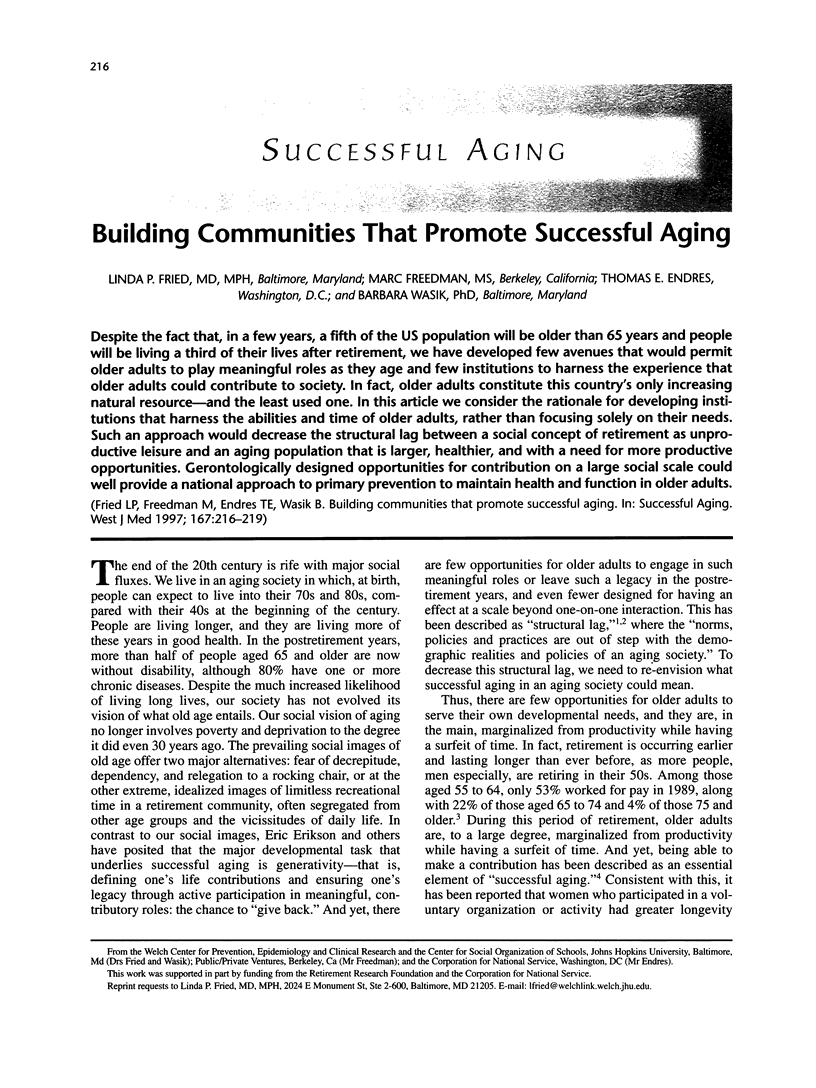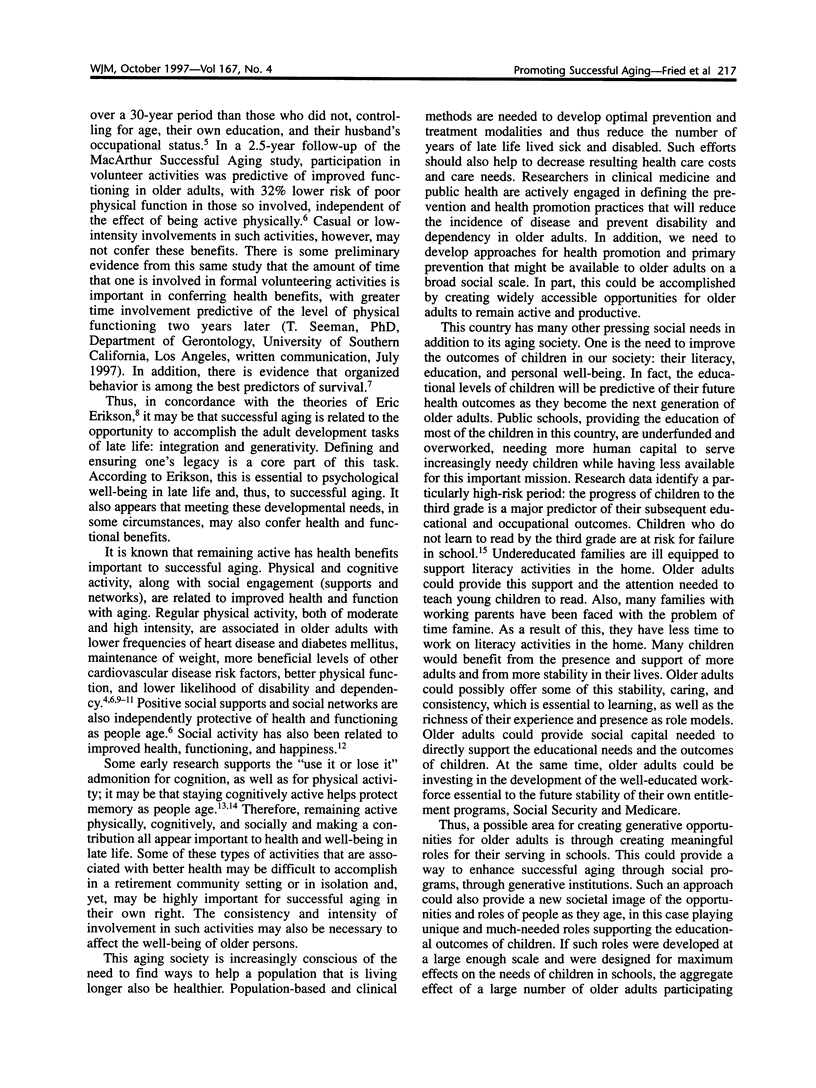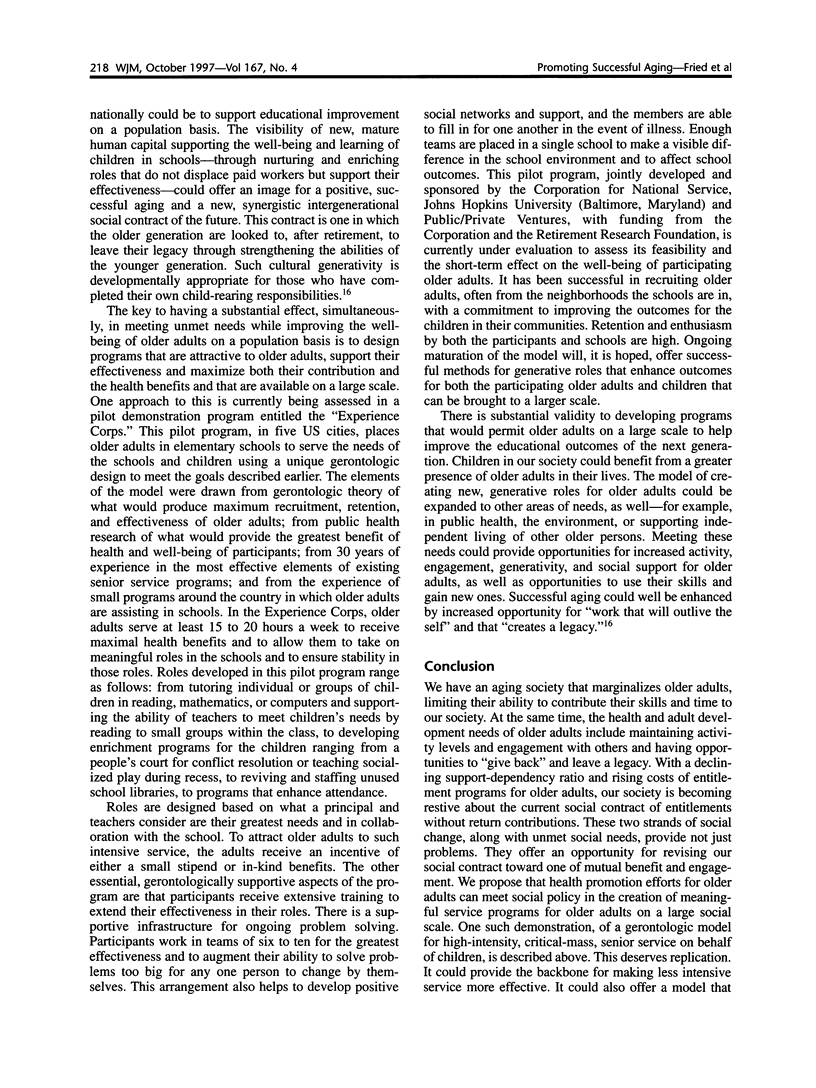Abstract
Despite the fact that, in a few years, a fifth of the US population will be older than 65 years and people will be living a third of their lives after retirement, we have developed few avenues that would permit older adults to play meaningful roles as they age and few institutions to harness the experience that older adults could contribute to society. In fact, older adults constitute this country's only increasing natural resource--and the least used one. In this article we consider the rationale for developing institutions that harness the abilities and time of older adults, rather than focusing solely on their needs. Such an approach would decrease the structural lag between a social concept of retirement as unproductive leisure and an aging population that is larger, healthier, and with a need for more productive opportunities. Gerontologically designed opportunities for contribution on a large social scale could well provide a national approach to primary prevention to maintain health and function in older adults.
Full text
PDF



Selected References
These references are in PubMed. This may not be the complete list of references from this article.
- Arbuckle T. Y., Gold D., Andres D. Cognitive functioning of older people in relation to social and personality variables. Psychol Aging. 1986 Mar;1(1):55–62. doi: 10.1037//0882-7974.1.1.55. [DOI] [PubMed] [Google Scholar]
- Craik F. I., Byrd M., Swanson J. M. Patterns of memory loss in three elderly samples. Psychol Aging. 1987 Mar;2(1):79–86. doi: 10.1037/0882-7974.2.1.79. [DOI] [PubMed] [Google Scholar]
- Glass T. A., Seeman T. E., Herzog A. R., Kahn R., Berkman L. F. Change in productive activity in late adulthood: MacArthur studies of successful aging. J Gerontol B Psychol Sci Soc Sci. 1995 Mar;50(2):S65–S76. doi: 10.1093/geronb/50b.2.s65. [DOI] [PubMed] [Google Scholar]
- Guralnik J. M., LaCroix A. Z., Abbott R. D., Berkman L. F., Satterfield S., Evans D. A., Wallace R. B. Maintaining mobility in late life. I. Demographic characteristics and chronic conditions. Am J Epidemiol. 1993 Apr 15;137(8):845–857. doi: 10.1093/oxfordjournals.aje.a116746. [DOI] [PubMed] [Google Scholar]
- Herzog A. R., Kahn R. L., Morgan J. N., Jackson J. S., Antonucci T. C. Age differences in productive activities. J Gerontol. 1989 Jul;44(4):S129–S138. doi: 10.1093/geronj/44.4.s129. [DOI] [PubMed] [Google Scholar]
- Paffenbarger R. S., Jr, Hyde R. T., Wing A. L., Lee I. M., Jung D. L., Kampert J. B. The association of changes in physical-activity level and other lifestyle characteristics with mortality among men. N Engl J Med. 1993 Feb 25;328(8):538–545. doi: 10.1056/NEJM199302253280804. [DOI] [PubMed] [Google Scholar]
- Riley M. W., Riley J. W., Jr Age integration and the lives of older people. Gerontologist. 1994 Feb;34(1):110–115. doi: 10.1093/geront/34.1.110. [DOI] [PubMed] [Google Scholar]
- Seeman T. E., Berkman L. F., Charpentier P. A., Blazer D. G., Albert M. S., Tinetti M. E. Behavioral and psychosocial predictors of physical performance: MacArthur studies of successful aging. J Gerontol A Biol Sci Med Sci. 1995 Jul;50(4):M177–M183. doi: 10.1093/gerona/50a.4.m177. [DOI] [PubMed] [Google Scholar]
- Siscovick D. S., Fried L., Mittelmark M., Rutan G., Bild D., O'Leary D. H. Exercise intensity and subclinical cardiovascular disease in the elderly. The Cardiovascular Health Study. Am J Epidemiol. 1997 Jun 1;145(11):977–986. doi: 10.1093/oxfordjournals.aje.a009066. [DOI] [PubMed] [Google Scholar]


